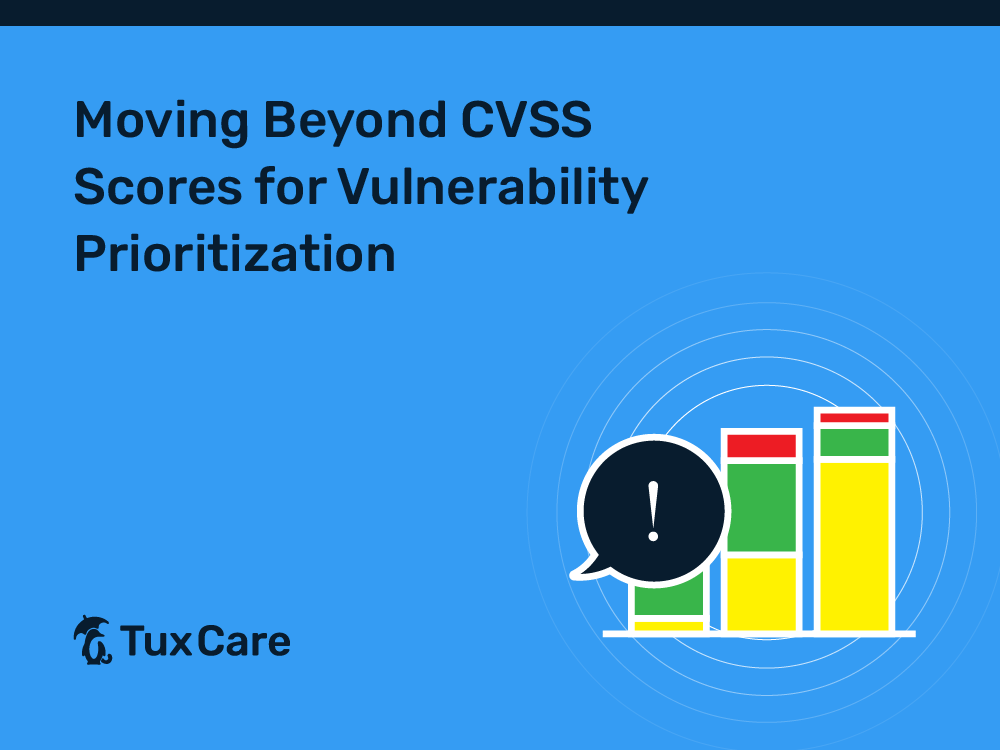Moving Beyond CVSS Scores for Vulnerability Prioritization
Since 2016, new vulnerabilities reported each year have nearly tripled. With the increasing number of discovered vulnerabilities, organizations need to prioritize which of them need immediate attention. However, the task of prioritizing vulnerabilities for patching can be challenging, as it requires consideration of various factors beyond the commonly used CVSS (Common Vulnerability Scoring System) scores.
This blog post sheds light on the multifaceted aspects that organizations must consider when prioritizing vulnerabilities and the advantages that live patching can offer.
The Limitations of CVSS Scores
The Common Vulnerability Scoring System (CVSS) provides a standardized framework for assessing the severity of computer system security vulnerabilities. It furnishes a set of metrics to capture the principal characteristics of vulnerabilities and produces a numerical score reflecting their severity. The score, ranging from 0 to 10, facilitates the assessment and prioritization of vulnerabilities, allowing IT professionals to focus resources on mitigating the most critical threats first.
However, while CVSS scores offer a valuable starting point, relying solely on them can lead to inadequate prioritization decisions. Vulnerabilities can have vastly different implications depending on their context, making it essential to consider additional factors.
Criticality and Reachability of Vulnerable Systems
Not all systems within an organization carry the same level of importance or exposure to potential threats. It is crucial to prioritize vulnerabilities affecting critical systems or those that can be easily reached by malicious actors.
For example, a medium-severity vulnerability in an externally facing web server hosting a customer portal could be of higher importance than a high-severity vulnerability in an isolated internal development server with restricted access. The impact on the organization and the potential for exploitation should guide the prioritization process.
Existence of Exploits
The existence of known exploits significantly influences vulnerability prioritization. If an exploit is publicly available or actively used in attacks, it raises the urgency of patching. Even vulnerabilities with lower CVSS scores can become immediate priorities if there is evidence of exploitation. Organizations should closely monitor security forums, threat intelligence sources, and vendor advisories to stay informed about the latest exploit developments.
Business Risk
Assessing the potential impact of a vulnerability on business operations is crucial. While some vulnerabilities may not directly compromise confidentiality or integrity, they could still disrupt critical services or harm the organization’s reputation. For instance, a medium-severity vulnerability in an e-commerce platform that could potentially lead to a denial of service might warrant higher priority due to financial risks.
The Significance of Specific Environments
The importance of a vulnerability can vary based on the specific environment in which it exists. Different organizations operate in diverse technological landscapes, comprising various software configurations, infrastructure architectures, and legacy systems.
A medium-severity vulnerability may have different implications depending on the configuration of systems and applications present in an environment. For instance, vendors might lower the original NIST scores for CVEs (Common Vulnerabilities and Exposures) affecting their products based on their own risk assessment. However, if environment-specific configurations weren’t considered in the vendor’s assessment, the lowered score may not accurately reflect the real risk associated with not patching the vulnerability.
Hence, a lowered vulnerability score doesn’t necessarily reduce the threat but may result in the vulnerability remaining unpatched. For example, CentOS 7 has numerous unfixed vulnerabilities including flaws in critical system packages that the distribution vendor decided not to patch.
Implementing Live Patching for Proactive Vulnerability Management
In the complex world of vulnerability prioritization, it is evident that organizations cannot rely solely on CVSS scores to make informed patching decisions. Factors such as criticality, reachability, existence of exploits, business risks, and the specific environment must be carefully evaluated. However, to effectively address the challenge of vulnerability management, organizations can benefit from implementing a live patching solution.
A live patching solution, like KernelCare Enterprise, offers an automated and reliable approach to patching vulnerabilities promptly. By continuously monitoring for vulnerabilities and applying patches in real-time, such a solution helps to mitigate the risks associated with medium, critical, and high-risk vulnerabilities. This proactive approach eliminates the need for manual prioritization, as the system automatically addresses vulnerabilities as they arise.
Implementing a live patching solution not only streamlines the vulnerability remediation process but also significantly decreases the risk of vulnerability exploitation. By ensuring that vulnerabilities are promptly patched, organizations can effectively minimize the potential for attacks and subsequent damages.
In conclusion, while vulnerability prioritization involves a multitude of considerations, a live patching solution offers an invaluable tool to address the challenge. By combining intelligent automation with real-time patching capabilities, organizations can enhance their security posture, mitigate risks, and stay one step ahead of potential threats.



 Documentation
Documentation Login
Login




